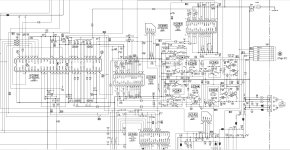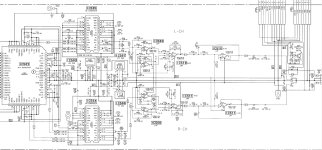Not a whole lot. The unit will get hotter, and you should check if there are any caps on the supply lines not specced for > 12V.
Jan
Jan
Sometimes you see data on this in an opamp datasheet - at lower than the nominal supply voltage several things may degrade, like open loop gain, bandwidth, distortion (related to the open loop gain no doubt) and output drive. However its usually not a big deal, opamps are usually internally biased everywhere with constant current sources making them fairly indifferent to supply voltage until headroom runs out and clipping happens.
Did not look at the schematics that closely, but a quick scan appears they are running the opamps on the same supply as everything else. So for the 1st one, the other chips were 7V so they used 7V for the opamp and for the 2nd, 12V, so they went 12V. Saved a bit on power supply costs.
Saving on expenses is understandable. But why did the manufacturer increase the voltage of the op-amp in the second case? What did he want to achieve? Please note that the operational amplifiers and their correction are the same.
The final stage is a multiple feedback filter and they have internal signal levels larger than the input and output levels, so you need more headroom there.
If it is a competent design, and it looks like that, you won't gain anything quality wise by increasing the 7.1V to 12V.
I would leave it alone.
There's lots of other ways to unleash your creativity ;-) .
Jan
If it is a competent design, and it looks like that, you won't gain anything quality wise by increasing the 7.1V to 12V.
I would leave it alone.
There's lots of other ways to unleash your creativity ;-) .
Jan
- Home
- Source & Line
- Digital Source
- Increasing the power supply of operational amplifiers


